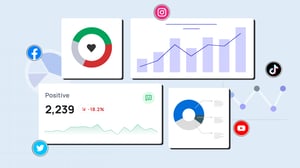
What is Social Media Analytics, and How Does it Help Brands?
Social media analytics is – without a doubt – one of the most important aspects of a successful social media presence. Analyzing data gathered from your business's social media efforts can help you understand what's working and where there is room for improvement. So say goodbye to guesswork and hi to data-driven decisions that can help you save a lot of time and money. In this article, you will learn more about social media analysis to better understand how to make the most of it.
What is social media analytics?
Social media analytics refers to the process of collecting and analyzing data that can be used to make data-driven decisions. Typically, a social media analysis includes reviewing a wide range of data and statistics, such as engagement, sentiment, and content performance across social media platforms.
Why is social media analytics important?
Social media analytics is essential when you want to make data-driven decisions. In the long run, data-driven decisions can help you understand where your efforts drive the most significant impact with the lowest efforts. As a result, you can efficiently prioritize your social media actions – spending your time and money where you get the most out of it.
Use social media analytics to understand the whole picture
The primary purpose of social media analytics is to provide you with data and insights that help you reach your overall goals. To understand the bigger picture, it is crucial to put different types of data in relation to each other.
Let us imagine that your collected data indicates high engagement and positive responses on organic posts – that is great! That means your strategy for organic content seems to be working well. But these numbers only give you half the picture. Without analyzing what is being said, you might miss valuable insights about why it works well.
Suppose you notice that most positive comments are about the colors a specific product comes in. These responses could indicate that the colors of your product are something that catches people's attention. Therefore, one could consider a future campaign highlighting various color options.
Understanding what causes high performance is vital to continuing a successful social media strategy. It takes away the guesswork and makes it easier to create content that resonates with your target audience on a deeper level.
In addition, some content might perform well on some platforms but not others. If you, for instance, identify low performance on a specific platform, you could consider changing the strategy for that particular platform. However, there's no need to spend the effort to change your overall strategy across all platforms if the problem is only related to one specific channel. 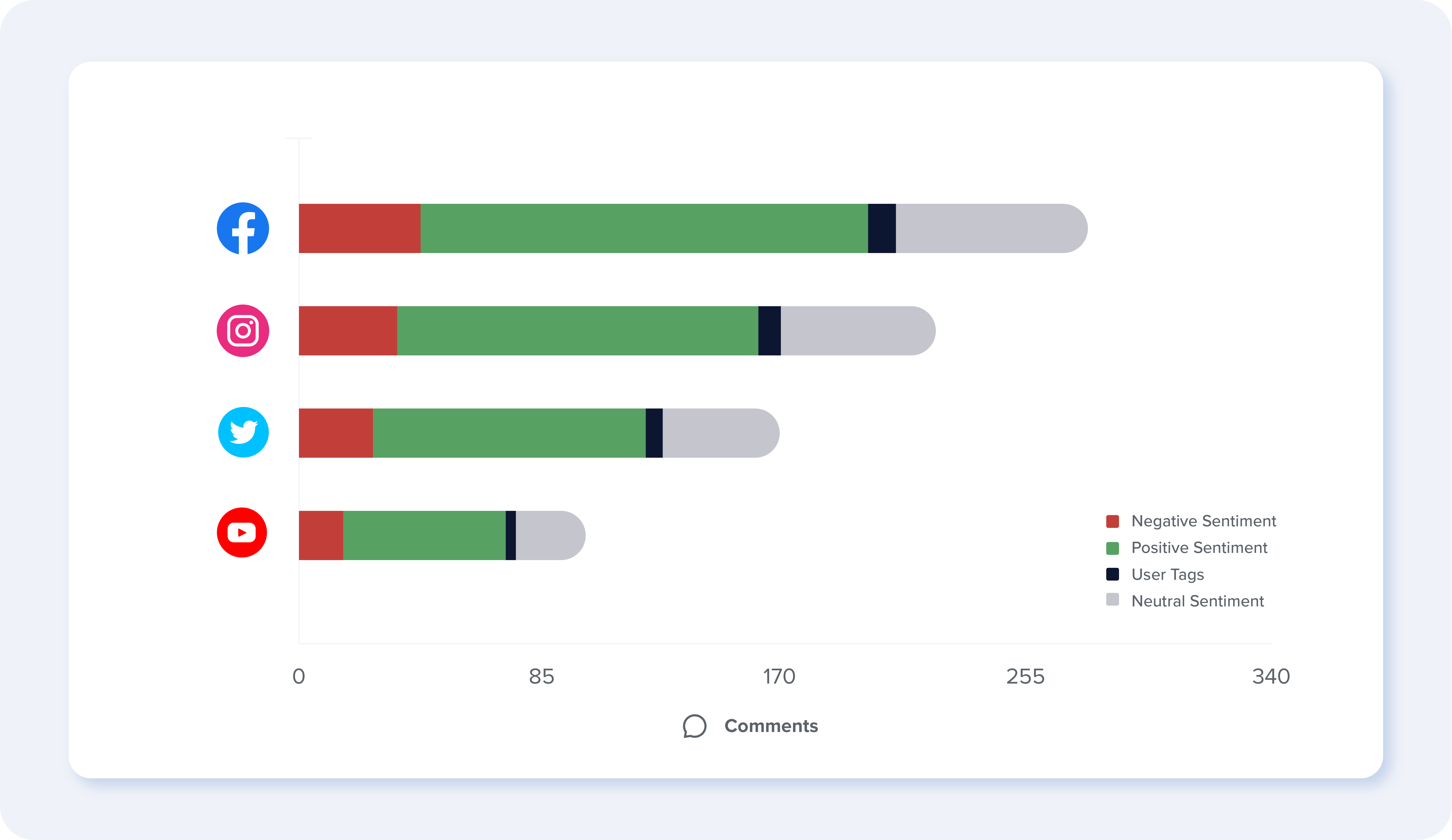
Explore comment sentiment insights to understand which platforms driving better results for your brand
Different types of social media analysis
Social media analytics done right, can have a great impact, helping you reach goals or solve specific problems. First, however, it is crucial to understand what data to analyze. One way of understanding what data you need is to define which analysis you want to do.
Here are four examples of social media analyses that can help you uncover valuable insights.
Audience analytics
Audience analysis can provide valuable insights that ensure you're creating relevant content. Age, gender, education level, income, geographic location, and cultural background can be factors to analyze further to really understand who your audience is.
Audience analysis on social media can help you answer the following:
- What type of personas are engaging with your content
- Common traits and characteristics among your most engaged audience
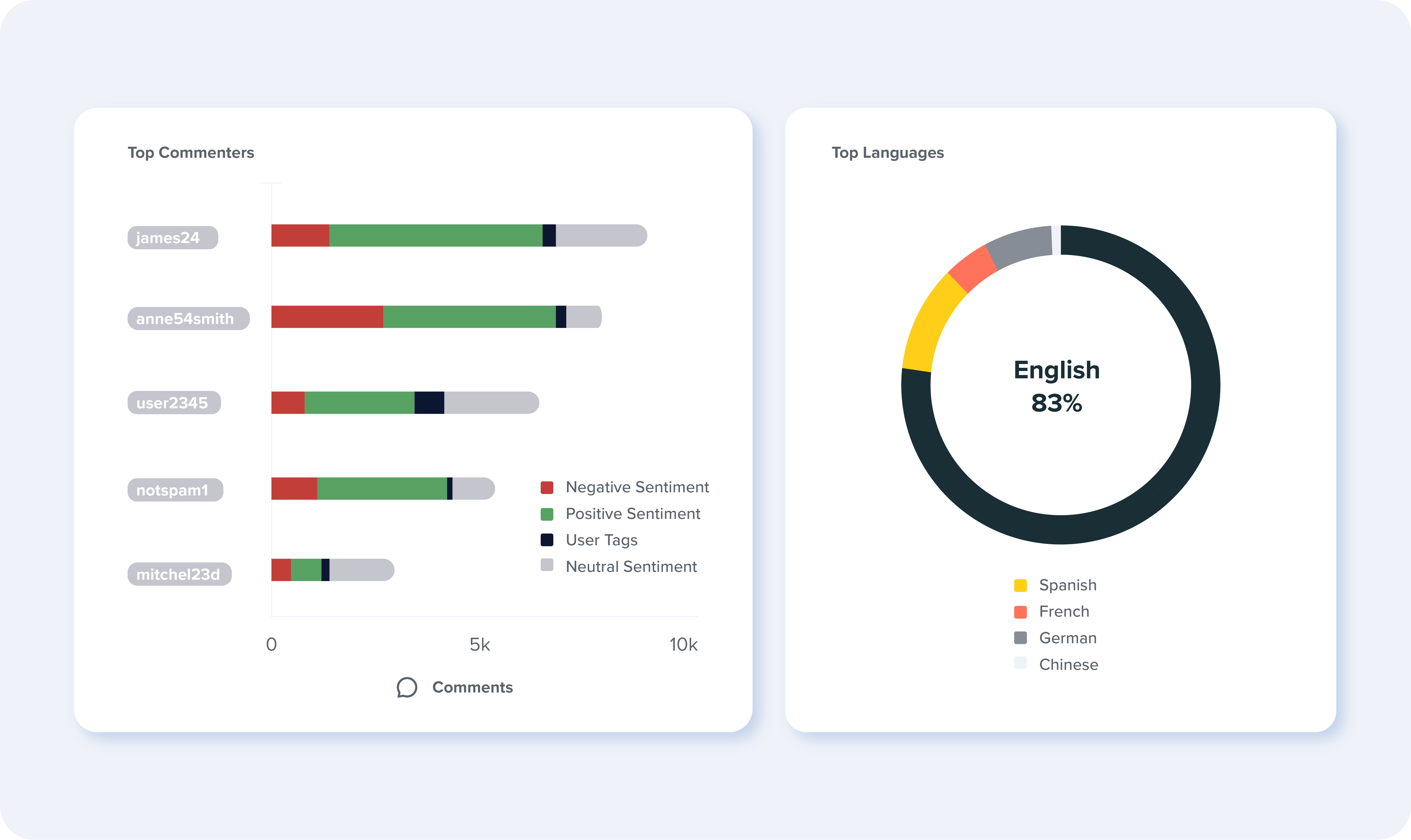 Analyze who is commenting on your social media channels and in which languages
Analyze who is commenting on your social media channels and in which languages
Sentiment analytics
Sentiment analysis can be useful when you want to, for example, interpret emotions in your social media comments. Understanding sentiment can help you gain a deeper understanding of what people actually like, as well as their concerns.
Sentiment analysis on social media can help you answer the following:
- How your brand is perceived across social media platforms
- What people think of specific ads and campaigns
- What your audience think about your product or service
 Comment sentiment analysis
Comment sentiment analysis
Content resonance
Analyzing the reasons behind your content performance is essential to keep up the good work and understand where there's room for improvement. With performance data, you can analyze which content resonates the best with your audience.
Content resonance analysis on social media can help you answer questions such as:
- Which content resonates best with your target audience
- On which platform do your social media marketing efforts perform best
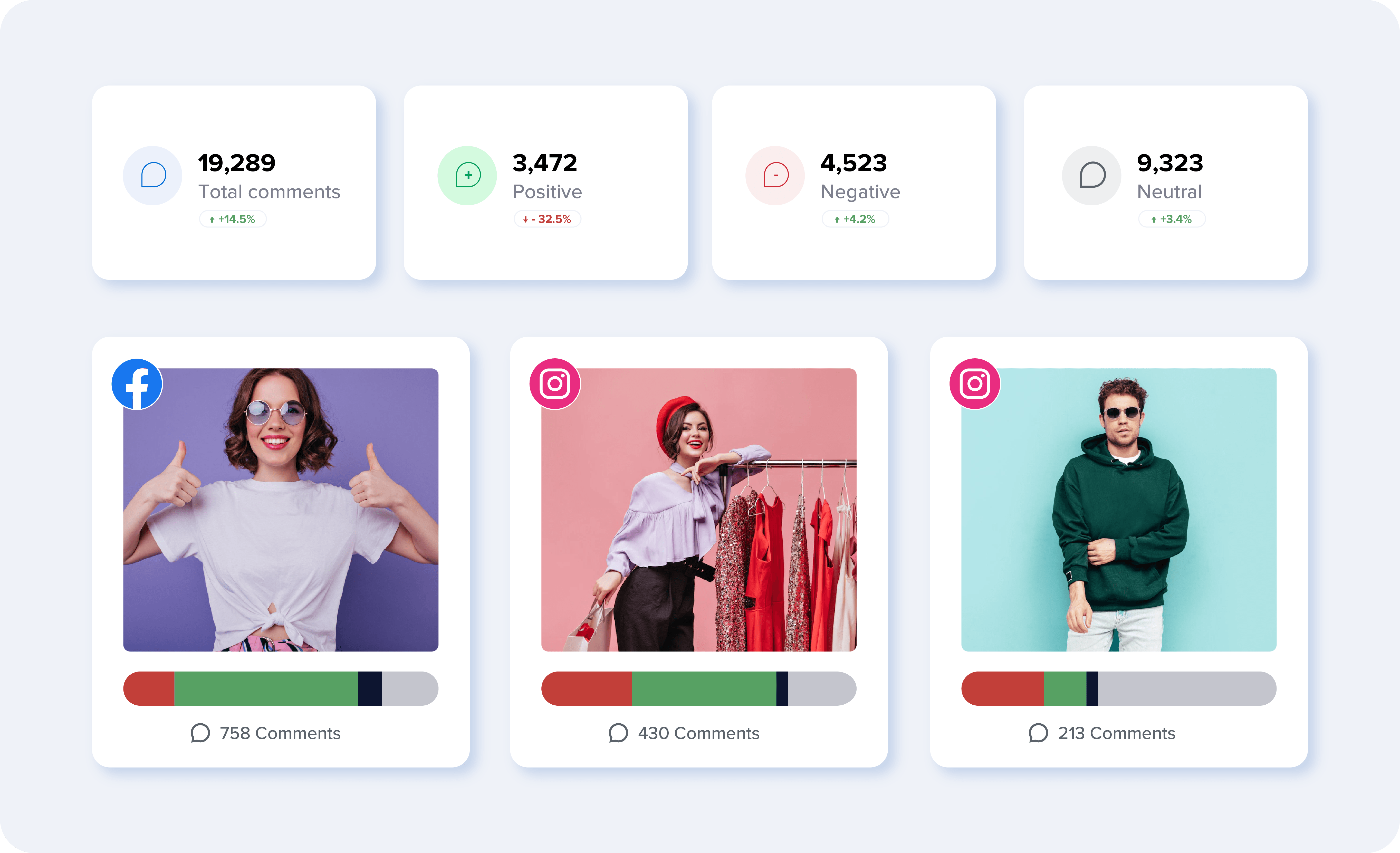 Explore which content resonates better with your audience
Explore which content resonates better with your audience
Paid social analytics
Analyzing paid social media content can help you understand which campaigns and ads perform the best. With this kind of overview, getting insights into what type of paid content to continue creating is easier. In addition, many social media analytic tools let you compare your brands' paid content in relation to each other.
Paid social analytics on social media can help you answer questions such as:
- How your social media paid efforts are performing toward your audience
- Which campaigns, assets, ad sets or ads perform best
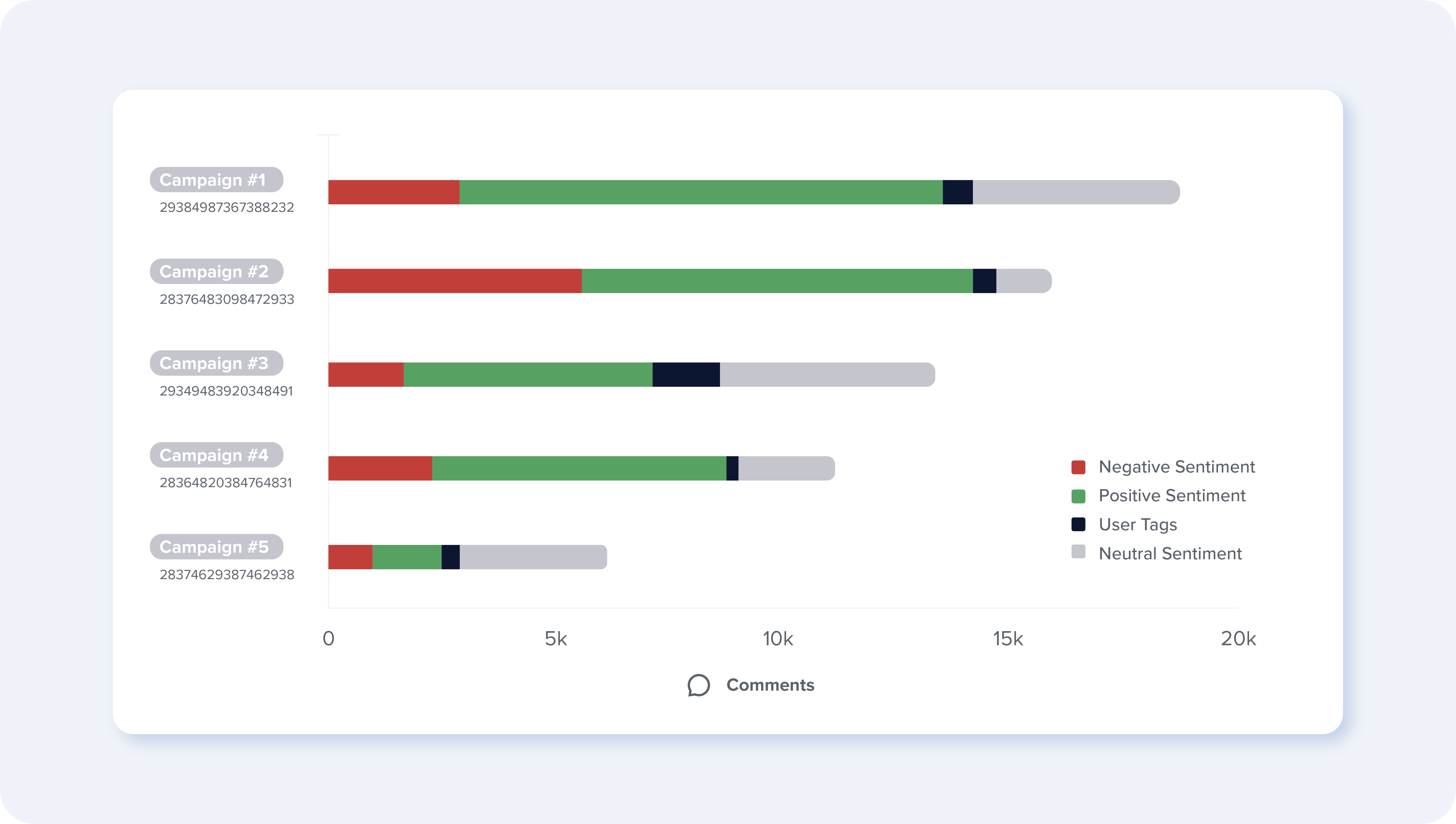 Explore which campaigns are driving better engagement results (including positive sentiment)
Explore which campaigns are driving better engagement results (including positive sentiment)
Extract the data you need with social media analytics tools
Today, nearly limitless amounts of data are collected. As of January 2023, studies suggest that 4.76 billion, or 59.4 percent of the world's population, are social media users.
Extracting the data you need from social media activities can be challenging – even when you know what analysis you'd like to make. Luckily, many social media tools can give you what you want in the blink of an eye.
Examples of what impact social media analytics can have
We have already covered the potential benefits of social media analytics. But real-life examples are always more exciting than any hypothesis. Therefore, let us look at social media analytics' impact on Purdue University's brand sentiment and engagement.
Purdue University collaborated with BrandBastion to gather valuable insights about how their audience resonated with their social media content. By analyzing conversations and top-performing content, Purdue University was able to better foster a positive and engaged student community. As a result, the university increased positive sentiment and engagement rate within three months.

Comparing 3-month data across Facebook, Instagram, and YouTube after implementing BrandBastion, to 3-month data before BrandBastion
Curious about how BrandBastion helps brands uncover the best insights from social media analytics? Read more about our Lite Platform here!